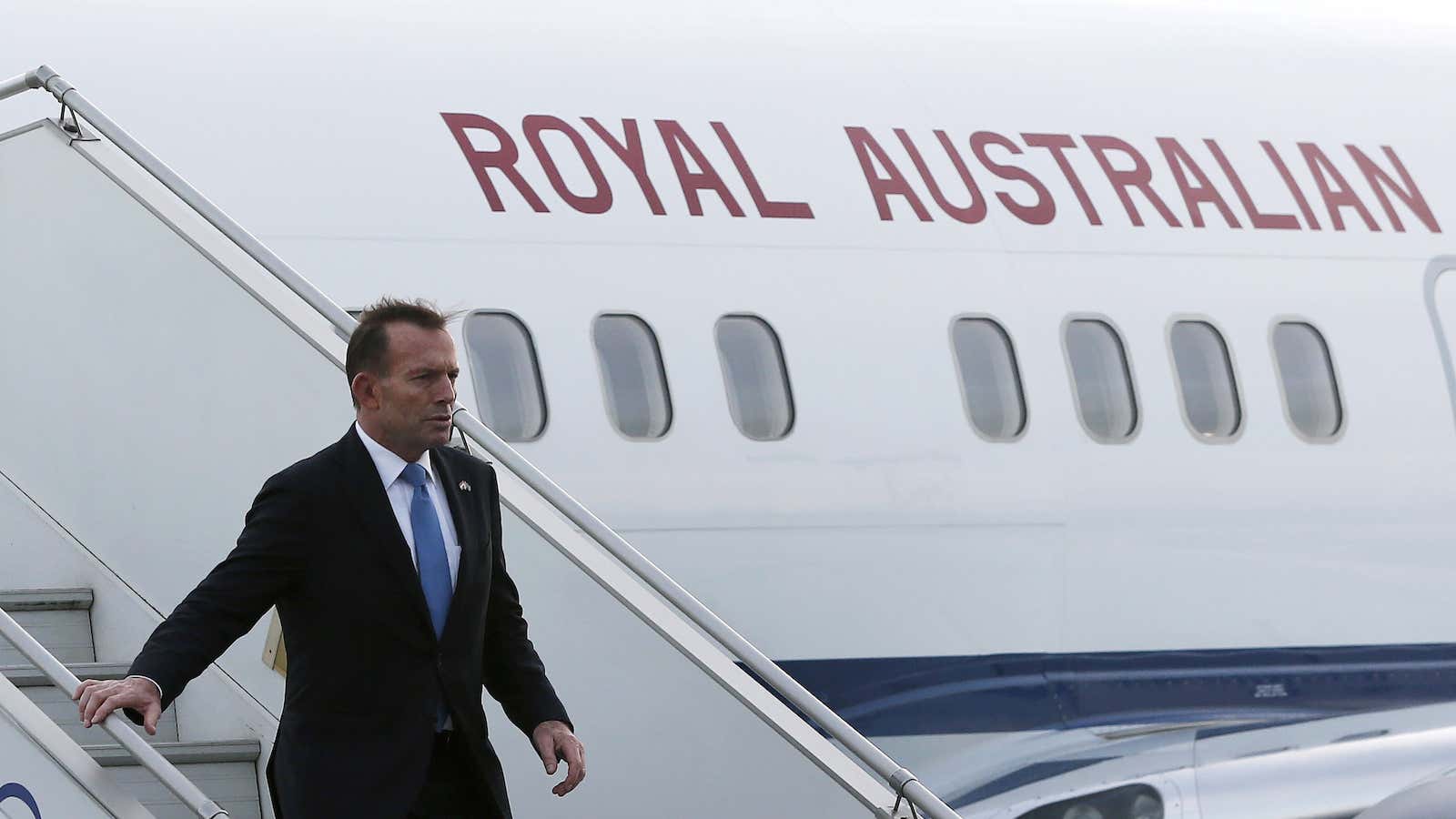Australia’s civil nuclear deal with India is expected to be signed on Friday night when the prime ministers of both countries meet at a function in New Delhi. And surprisingly, it has less to do with access to large stocks of uranium by a nuclear weapons-enabled country, than it does with bilateral relations.
Australia has long been on the outer fringe of India’s foreign relations priorities, and its outlier status is occasionally underscored when relatively minor issues flare up, for example perceptions of racism against Indian students in Australia.
But observers and diplomats say a deal, which would see it sell its uranium to India, would place Australia on the road to becoming a major strategic partner. While it will never crack the inner sanctum—occupied by countries including Japan, the United States and Germany—Australia will finally be taken seriously as a worthy partner to New Delhi in the region.
“There’s a lot of symbolic value to this on both sides,” said MV Ramana, a nuclear specialist at Princeton University and author of ‘The Power of Promise: Examining Nuclear Energy in India’.
“Though they talk about commercial aspects, that’s not what’s driving this deal. It’s about Australia trying to get a much closer relationship with India. And for India, they’re trying to be seen as a legitimate nuclear weapons state.”
India has already signed civil nuclear agreements with the US and Canada, among other countries. These smoothed the way for the Australian deal, which took just 18 months to negotiate after former prime minister Julia Gillard announced her party’s previous policy of not selling to a non-signatory to the Nuclear Non-Proliferation Treaty would be reversed.
Immediately after her announcement in October 2012, Australian government representatives in India found barriers were lifted in bilateral relations: rather than being snubbed, they suddenly found themselves with a place at the table. For a country without the same economic clout as Japan, with its billions of dollars in loans and investments, that was a significant boost. Australia holds around 40% of the world’s recoverable uranium, although less than 20% of this is currently exported.
For India, the deal emphasises its growing importance and clout on the world stage. Insiders say that while the negotiation process was relatively smooth, India undeniably had the upper hand throughout.
“That doesn’t surprise me,” said Ramana. “India would basically say, look if you don’t sell it’s no great loss, we can buy from other countries like Kazakhstan and Russia. But we’re a big developing country, we’ll go on to have more trade, we’ll import lots from you.”
India, he adds, used similar arguments when negotiating the US and Canadian deals. It’s also widely believed that the US played a behind-the-scenes role in convincing the Nuclear Suppliers’ Group to grant India a special one-off waiver from the group’s rules governing civilian nuclear trade in 2008.
The deal with Australia, too, is all about geopolitics and only marginally about nuclear sales. Indeed, Australian laws long limited uranium operations to just three mines. However, the Queensland state government overturned its mining ban in 2012, while New South Wales state is also accepting applications for uranium exploration licenses.
Because of the restrictions, most of Australia’s uranium is locked up in long-term contracts. As it is a highly-regulated commodity that doesn’t have much of a spot market, for the time being there might not even be much uranium to spare to send India’s way. With shipments not expected for at least two years, for now it’s not clear whether this deal will immediately help India on its quest for energy security.




